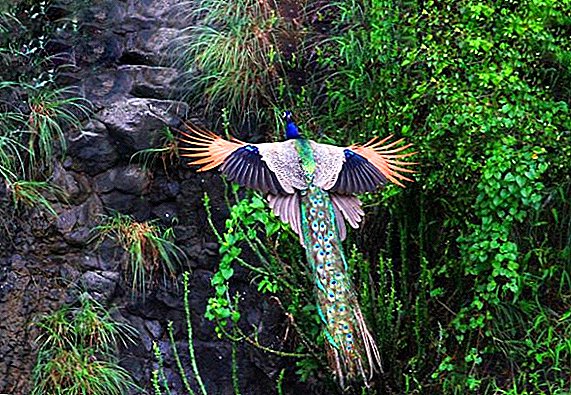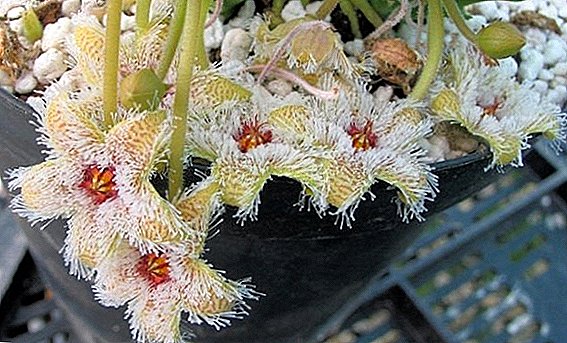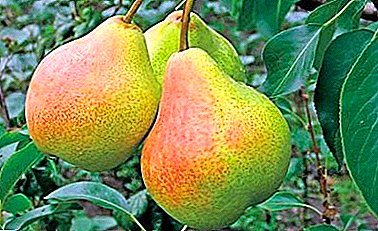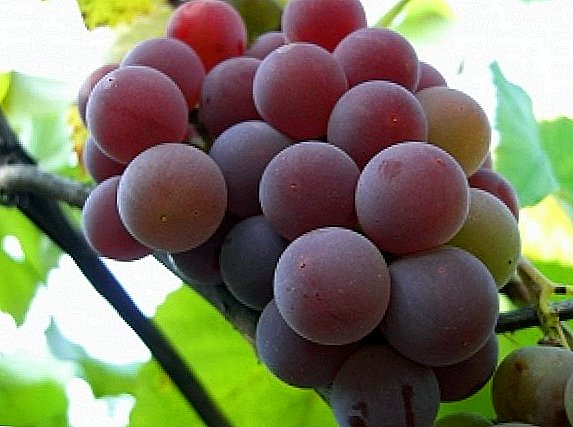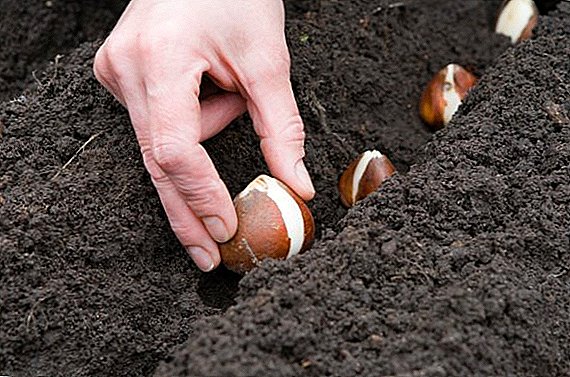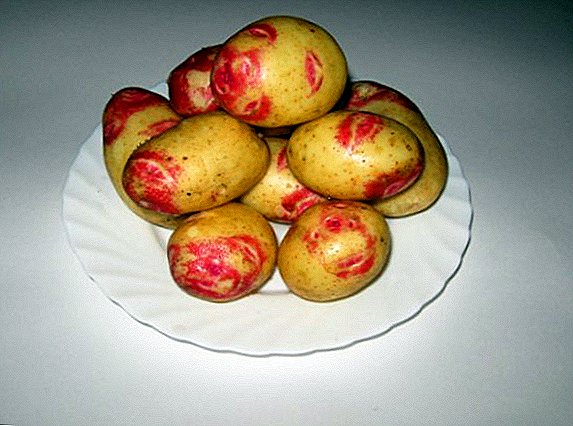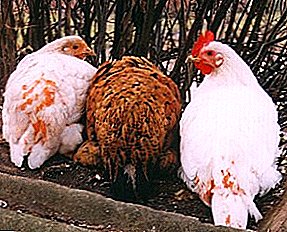
Beauty Orchid has long been mastered in our conditions, with proper care, the hybrid variety is neither capricious nor capricious. Phalaenopsis Beauty is unpretentious in the care, gives a plentiful color, beautifully smelling flowers have the most intricate shades - from golden to soft pink.
The colors of the petals are different calm, gentle, pastel tones. In the center of the flower itself there is a dark, burgundy-colored element - the button makes a bright accent, and the colorful curly lip contrasts so much the tenderness of this unusual orchid.
What is this plant?
The Orchid of Beauty belongs to the ancient Orchid family.. A flower of the genus epiphytes and lithophytes, in nature it grows in rocky areas, ravines of mountains, on trees and stumps. Homeland - South Asia, Australia.
Description and appearance
Rosette leaves dense. The leaves are broad, voluminous, rigid in structure, shiny, glossy. The color of the leaves is dark green. Peduncles long, up to 50 - 60 cm in height. Aerial roots, peduncles grow from the sinuses of leaves. Peduncles curved, form a cascade branch.
Orchid varieties unpretentious, give abundant, fragrant flowering. The flowers themselves are large, up to 7 - 8 cm in diameter. The colors of the flowers are varied, depending on the variety, yellow, golden, variegated, pale pink with violet splashes. Lip contrast, bright, red, burgundy hue. According to the structure, the petals can be velvety, semi-arched, shiny.
History of
The first descriptions of natural varieties were made in the 18th century by Carl Linnaeus in the book Plant Species. Later, K. Blume called these exotic flowers found on the Malay Archipelago falenopsis, which means "like a butterfly." In those days, orchids were considered elite flowers, they were bred only in the Royal Botanical Gardens. In modern floriculture followers - hybrids adorn many homes and greenhouses.
Distinctive features
Beauty Orchid - bred variety, more hardy and unpretentious. Easily multiplies, adapts to home conditions.
The orchid, with proper care and stimulation, gives a lot of buds and flowers, is characterized by abundant long flowering.
Podort and their photos
Check out the most popular Orchid Beauty varieties and see their beauty in the photo.
Golden

Golden Orchid loves sunshine and abundant watering. Differs in bright yellow color of flowers with a golden shade. The flowers are large, up to 8 - 9 cm in diameter. The leaves are wide, dense, rich green.
We offer to watch the video about the Golden orchid:
"Elegant"

Variety of flowering. The flowers are patterned, purple-pink, marked with a scattering of spots on the petals. The stem grows vertically. Leaves hard, dense, dark green.
We offer to watch a video about the elegant orchid:
"Wanda Blue"

The height of the stem reaches 60 cm. The colors of the flowers are pale lilac. May bloom several times a year. Orchid bloom Wanda Blue long. It has thick aerial roots.
We offer you to watch a video about the features of growing Wanda Blue orchid:
Bloom
When and how is it going?
In the apartment most often flowering begins at the end of autumn.
Before and after flowering
In the period of active growth, spring and summer require special care - abundant hydration, additional fertilizing, good light. After flowering, the flower gains strength, enters the phase of rest. Immediately after flowering, it is recommended to prune the stem itself - peduncle.
The cut must be 2 cm higher from a dormant bud. It is recommended to treat the kidney itself with any growth stimulant (epin), which contributes to the growth of the new peduncle.
What to do if the buds are missing?
Incorrect content - the main reason for the lack of flowering. Special stimulation is required - a decrease in air temperature to 12–14 ° C. At the same time, watering should be reduced. To sustain such a regime is necessary for 2 weeks. For frequent flowering night and day temperature drops up to 7 - 8 ° С are also obligatory.
Step-by-step care instructions
Choosing a place
The best place in the apartment to house the plants is the western and eastern windows.. On the southern location, daytime sun protection is required - light shading. Direct rays cause leaf burns. In winter, it is undesirable to install pots on the north side. On cloudy days, it is necessary to dosachivat plant with special lamps for 3-4 hours per day.
Orchid Beauty does not tolerate cold air, drafts. Pots should not be installed near air conditioners and fans.
Soil preparation and pot
 Mandatory requirement for the substrate - lightness, looseness, permeability of water and air. At home, the substrate is mixed from small pieces of bark, charcoal and moss - sphagnum, in a ratio of 3: 3: 1. Drainage layer is required. The composition of the drainage base includes shells, pebbles, crushed stone, foam plastic, expanded clay.
Mandatory requirement for the substrate - lightness, looseness, permeability of water and air. At home, the substrate is mixed from small pieces of bark, charcoal and moss - sphagnum, in a ratio of 3: 3: 1. Drainage layer is required. The composition of the drainage base includes shells, pebbles, crushed stone, foam plastic, expanded clay.
The presence of drainage prevents rotting of the roots, contributes to the full development of the root system.
The pots should be made transparent so that the root gets enough light. Plastic containers can be used. Be sure to make drainage holes on the sides of the pot and on the bottom. It is also good to use for planting boxes and baskets of vine and wood - the material is well transmits heat, absorbs moisture.
Temperature
In summer, the optimum air temperature is 20 - 24 ° C. In the heat, with additional moisture, the Orchid Beauty can withstand up to 30 ° C.
The pots are installed on wet clay, open pots of water are placed next to the pots. Spraying orchids required.
When overheating leaves wither, the flower drops buds. In autumn and winter, reduce the temperature of the content. During the rest period, the flower requires cool air, 12 - 14 ° С.
Observe daily temperature drops of 3 - 4 ° С.
Humidity
Humidity of air and substrate - the necessary conditions for the Orchid Beauty. Humidity frames - 30 - 60%, depending on the season. In the heat, humidity should be increased by spraying the leaves. Also, the flower prefers bathing and a refreshing shower. These water treatments reduce the pressure in the leaf cells.
Regular airing of the room, stagnation of moist warm air provokes the appearance of pathogenic bacteria.
Lighting
The light should be bright, but diffused, distant, soft.. Direct sunlight is contraindicated in tropical orchids. Due to lack of light, the leaves turn pale and stretch out. From the intense sun on the leaves spots appear.
Watering
 Water for irrigation should be warm, clean, slightly acidified.
Water for irrigation should be warm, clean, slightly acidified.
In the summer the flower is watered 2-3 times a week. Do not allow the soil to dry out. In winter, watering is weak, it is enough to moisten the earthy earth 1 time in 2 weeks with its full drying.
You can water in several ways.:
- Water is poured into the pan.
- A warm shower is used.
- Immersion method - pots are lowered into a container with water for 20 minutes. Next, you need to let the excess water to drain, the pots are installed in dry pallets, so as not to soak the roots.
Top dressing
Fertilize the substrate from spring to autumn. It is necessary to strictly follow the instructions and dosage dressings. Commonly used mineral complex fertilizers for orchids.
Instead of applying fertilizer, you can replace the top layer of the substrate.
Nitrogen supplements are used in early spring for the growth of stems and leaves. In summer, it is preferable to use potash and phosphate fertilizers at the rate of 1 g of fertilizer per 1 liter of water. It is recommended to combine top dressing with irrigation.
Transfer
Flowers are transplanted infrequently, 1 time in 3 - 4 years. Getting used to new conditions can be painful.
A flower should be transplanted if:
- The substrate has a sour smell, began to decompose.
- The roots have grown, the pot has become small.
- There are signs of root and stem disease.
When transplanting, all components of the substrate are mixed, the soil is steamed for disinfection, moistened. Transplanting should be done only after flowering..
Fragile, brittle roots during transplantation require careful handling.
 Transplant plan:
Transplant plan:
- For disintegration of the old substrate, the pot is placed in water for 5 minutes.
- Carefully remove the flower from the old pot, (clasp the flower under the rosette with leaves).
- With a clean knife, rotten and dry roots are cut.
- The slices are covered with crushed coal or cinnamon, the root is dried for 50 minutes.
- Drainage and half of the substrate are poured at the bottom of the treated pot.
- The flower is immersed, the root is neatly distributed over the surface.
- The soil is sprinkled on the sides to fix the flower.
- The pot is filled with a mixture, should not be tamped.
Do not fill the root collar, refrain from watering for 3-5 days.
We offer to watch a video about orchid transplantation:
How to multiply?
Reproduction should be done after flowering, while maintaining the freshness of flowering stems. Vegetative reproduction by division is the safest method at home.
A parent flower must be healthy, adult, have large leaves and a well-developed root.
Breeding procedure:
- With a clean tool, an incision is made along the peduncle and across, to the level of a sleeping point.
- Sections are processed with charcoal.
- Each part should have leaves and a part of the root.
- Each part is transplanted into a separate container or aquarium with a ready substrate.
- Watering stops for 3 days.
- Light restrained, diffused.
Sometimes the flower forms on the peduncle, the stem additional sprouts - kids. The sprout with leaves and roots is separated into separate small pots for growing.
Before planting, it is advisable to drop sprouts into a solution with growth hormone. (root), which contributes to the rapid rooting.
Diseases and pests
 Viral diseases are difficult to cure. The virus infects leaves and flowers. It should remove the pot from healthy flowers.
Viral diseases are difficult to cure. The virus infects leaves and flowers. It should remove the pot from healthy flowers.- Timely treatment with insecticides can save from bacterial lesions of the stem and root decay, the substrate should be replaced, the flower should be transplanted.
- From overflows and cold fungus appears - gray bloom, spots on the leaves. It is necessary to stop watering, replace the top layer of soil, process the leaves with fitoherm.
- In the heat may appear spider mite. You can use a hot shower, spraying acaricides (fitoverm or actophyte). The procedure is repeated after 7 days.
- Root rot is treated with an urgent transplant, sanitary pruning of rotted roots. The whole root is treated with a base solution.
We offer to watch a video about orchid diseases and pests:
Conclusion
In order to grow an elite beauty Orchid, one should adhere to the basic rules: accuracy and restraint in watering, lighting, dressing. Delicate flower requires careful treatment.


 Viral diseases are difficult to cure. The virus infects leaves and flowers. It should remove the pot from healthy flowers.
Viral diseases are difficult to cure. The virus infects leaves and flowers. It should remove the pot from healthy flowers.